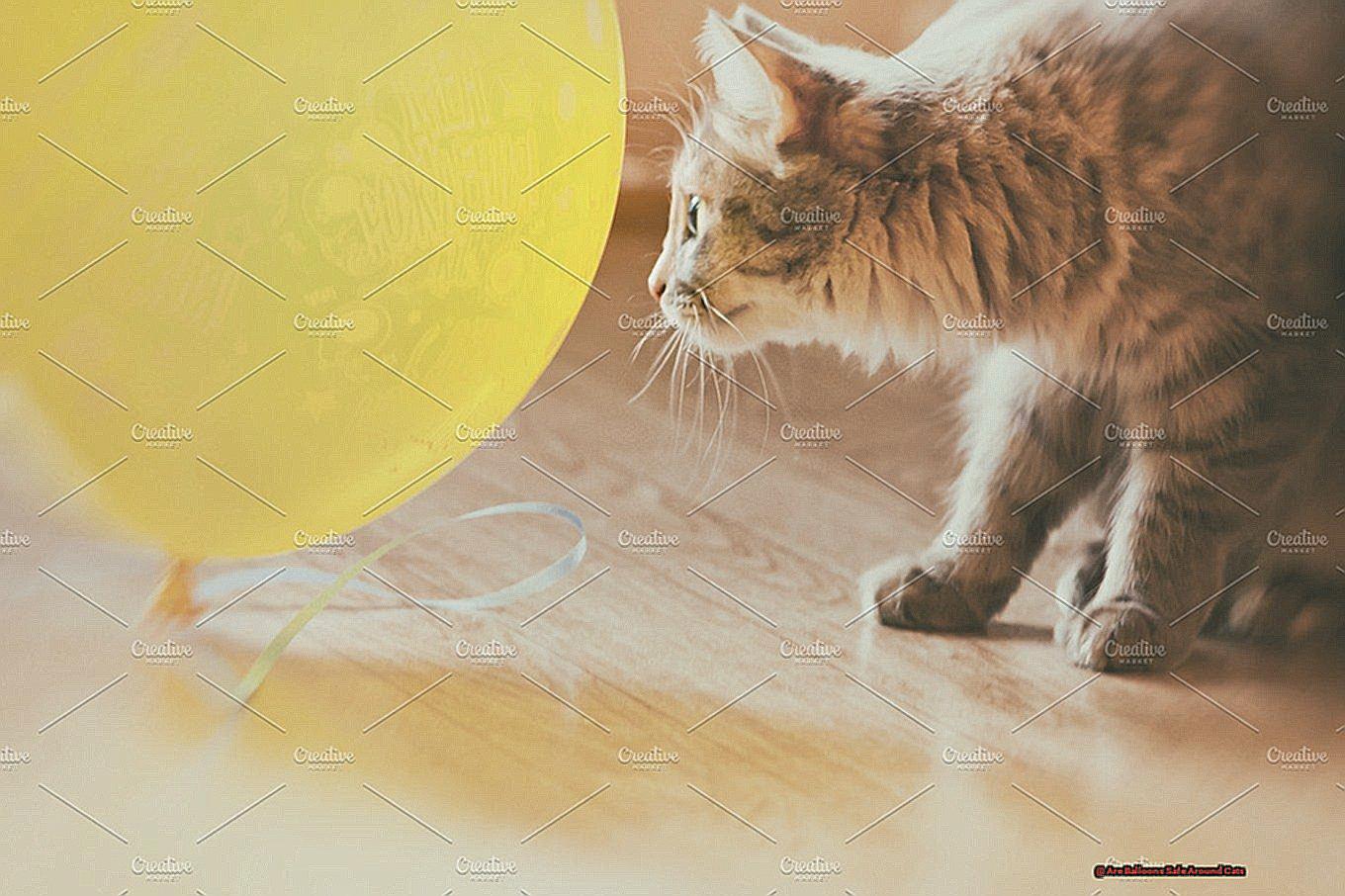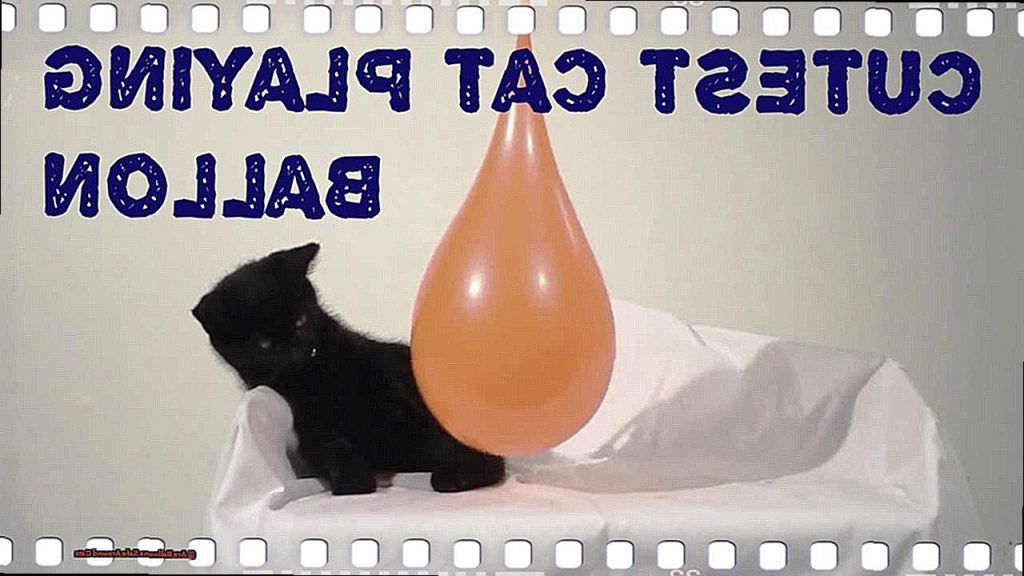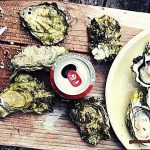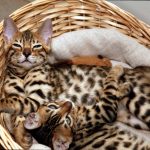Imagine this: your cute and cuddly cat, batting at a vibrant balloon hovering just out of reach.
It’s an adorable sight, but as cat owners, we understand the potential hazards that come with our curious companions and their fascination with balloons. While these inflatable decorations may seem harmless, they can actually pose serious risks to our furry friends.
From popped balloons to choking hazards, here’s everything you need to know about ensuring your cat’s well-being around these floating objects.
Are Balloons Safe Around Cats?
Contents
Balloons may seem harmless and fun, but for cats, they can be a potential danger. As cat owners, it’s important to consider the safety of our furry friends when it comes to having balloons around the house. In this blog post, we’ll dive into the potential risks and precautions to take to ensure your cat’s safety.
First and foremost, let’s talk about the main concern with cats and balloons: choking. Cats are curious creatures and may see balloons as a toy or prey. They may try to swat at them or even bite them, which can lead to small pieces of the balloon being ingested. This can cause choking hazards or intestinal blockages, which can be life-threatening for our feline friends.
But it’s not just the swallowing of small pieces that we need to worry about. The material used to make balloons, such as latex and Mylar, are not easily digestible for cats. If they do swallow a larger piece of the balloon, it can cause blockages in their digestive system that may require emergency surgery.
Even if your cat doesn’t ingest any part of the balloon, they can still get injured from playing with them. The sharp edges of popped balloons can cause cuts or puncture wounds on a cat’s paws or mouth. This can be painful and may require veterinary attention.
In addition to physical harm, balloons can also cause psychological distress for cats. The loud popping sound of balloons can be very frightening for cats, causing them to become anxious or stressed. This can lead to behavioral issues such as hiding, aggression, or destructive behavior.

So what can we do to keep our cats safe around balloons? First and foremost, prevention is key. Keep balloons out of reach of cats at all times, whether they are inflated or deflated. If you notice your cat showing interest in the balloons, discourage them from playing with them and remove the balloons from their reach.
Properly disposing of any popped or deflated balloons is also essential. This will prevent your cat from accidentally ingesting any pieces that may be lying around.
If you are planning a party or event with balloons and have a cat, it’s best to set up a separate room for your cat to stay in during the celebration. This will ensure their safety and prevent any potential accidents.
Understanding the Natural Curiosity of Cats and How it Relates to Balloon Play
Cats are curious creatures by nature. They love to explore and investigate their surroundings, no matter how mundane or ordinary they may seem to us. This curiosity is what often leads them to play with things that catch their attention, such as balloons.
But why are cats so drawn to balloons? Well, it’s not just because of their bright colors or floating movement. It’s also because of their hunting instincts. As predators, cats are hardwired to chase and play with moving objects. And what better moving object than a balloon?
So, it’s no surprise that when a cat sees a balloon floating around, their natural instincts kick in, and they can’t help but paw at it or even try to bite it. However, as innocent as this behavior may seem, it can actually be quite dangerous for our feline friends.
When cats play with balloons, they run the risk of accidentally popping them. This loud noise can startle them and cause them to run away in fear. This sudden reaction can also lead to other accidents, such as knocking over items or getting tangled in cords or furniture.
Moreover, if a cat ingests a piece of the popped balloon, it can cause intestinal blockages or choking hazards. As responsible cat owners, it’s our job to protect our furry companions from these potential dangers.
So, what can we do to keep our cats safe while still letting them satisfy their curiosity and hunting instincts? Here are some tips:
- Supervise balloon playtime: Whenever your cat is playing with a balloon, make sure someone is keeping an eye on them. This way, you can intervene if things get too rough or if the balloon pops.
- Use pet-safe balloons: If you want to let your cat play with balloons, make sure to use pet-safe ones that are less likely to pop and cause harm.
- Keep balloons out of reach: When you’re not supervising, make sure to keep balloons out of your cat’s reach. This will prevent any potential accidents or ingestion of balloon pieces.
- Provide alternative toys: To satisfy your cat’s hunting instincts, provide them with plenty of safe and interactive toys, such as wand toys or puzzle feeders.
Potential Choking Hazards and Intestinal Blockages from Ingesting Balloon Materials
As cat owners, we all want our furry friends to have fun and enjoy their playtime. But did you know that something as simple as a balloon can pose serious risks to your cat’s health? Yes, you heard it right. Those colorful and bouncy balloons that we often use for parties and celebrations can be dangerous for our feline companions. As an expert on the topic of potential choking hazards and intestinal blockages from ingesting balloon materials, I am here to provide you with a comprehensive understanding of this issue.
Why are balloons dangerous for cats?
Cats are naturally curious creatures and they love to play with small objects. Balloons, with their bright colors and bouncy nature, can be incredibly tempting for cats to play with. However, the main concern with balloons around cats is the risk of choking. Cats may try to bite or scratch at the balloon, causing pieces of the material to break off and potentially get stuck in their throat. This can lead to choking or even suffocation, which can be fatal.
Even if a cat does not try to play with the balloon, it can still pose a danger if it pops unexpectedly. The loud noise can startle a cat and cause them to run and hide, potentially injuring themselves in the process.
Intestinal Blockages: A Serious Risk
Another major concern is intestinal blockages from ingesting balloon materials. If a cat swallows a piece of balloon, it can get stuck in their digestive tract and cause serious health issues. This is especially dangerous for kittens or older cats with weaker digestive systems. In some cases, surgery may be required to remove the blockage.
Allergic reactions
Balloons made from latex can also cause allergic reactions in some cats. This can range from mild skin irritation to more severe symptoms such as difficulty breathing. It’s important to be aware of any potential allergies your cat may have and avoid exposing them to latex balloons.
Precautions for Cat Owners
To prevent these potential hazards, it’s crucial for cat owners to take necessary precautions. Here are some tips to keep in mind:
Supervise playtime: It’s important to supervise your cat’s playtime with balloons and intervene if you notice them trying to bite or scratch at the balloon.
Why Kittens are at a Higher Risk for Balloon-Related Injuries
Kittens are undeniably adorable and playful creatures, but their curious nature and small size can put them at a higher risk for balloon-related injuries. As cat owners, it is our responsibility to understand these risks and take necessary precautions to keep our furry friends safe. In this blog post, we will explore the contributing factors that make kittens more vulnerable to balloon-related injuries and share insights on how to protect them.
Curiosity can be Dangerous
One of the main reasons why kittens are at a higher risk for balloon-related injuries is their innate curiosity. These tiny felines love to explore their surroundings and are naturally drawn to new objects, including balloons. Their playful nature makes them more likely to interact with balloons, whether it’s chasing after them or swatting at them. Unfortunately, this can lead to potential dangers such as swallowing balloon pieces or getting tangled in string attached to balloons.
Size and Experience Matters
Another factor that puts kittens at risk is their small size and lack of experience. Due to their miniature size, kittens have delicate paws and claws that can easily get injured from popping balloons or getting tangled in strings. Moreover, their lack of experience makes them unaware of the potential dangers associated with playing with balloons. Unlike adult cats who may have encountered balloons before and know to stay away from them, kittens may not yet have this knowledge.
Ingestion of Balloon Pieces
Kittens’ natural tendency to chew on objects as they explore their surroundings can also be a cause for concern when it comes to balloons. Accidentally swallowing balloon pieces can lead to choking or intestinal blockages, which can be life-threatening for kittens. This is why it is crucial for owners to keep an eye on their kittens when there are balloons around and ensure they do not have access to any popped balloons or strings.
Precautions for Safe Playtime
As responsible pet owners, it is our duty to keep our kittens safe during playtime. Here are some precautions you can take to minimize the risks of balloon-related injuries:
The Toxicity of Balloon Chemicals and Their Effects on Cats
As cat owners, we all want to provide our furry friends with a safe and happy environment. However, there are certain household items that may seem harmless, but can actually pose a significant threat to our feline companions. One such item is balloons.
Balloons may seem innocent enough, but they can actually be quite toxic for cats. Let’s take a closer look at the chemicals used in balloons and their potential effects on our beloved pets.
What Are Balloon Chemicals?
Balloons are typically made of latex, a material derived from rubber trees. While latex itself is not harmful to cats, most latex balloons also contain chemicals such as ammonia, ethylbenzene, and toluene. These chemicals are used to make the balloon more flexible and stretchy, but they can be harmful to cats when ingested or inhaled.
The Dangers of Ingestion
Cats have a strong sense of smell, and the chemicals used in balloons can be overwhelming for them. When a cat comes into contact with a balloon, they may try to sniff it or even lick it, which can lead to ingestion of these chemicals. This can cause a range of health issues for cats, including gastrointestinal problems, respiratory issues, and even organ damage.
Even if your cat does not ingest the balloon or its chemicals, simply being around them can still pose a risk. When a balloon pops, it releases small particles into the air which can irritate a cat’s sensitive respiratory system. This can lead to coughing, wheezing, and difficulty breathing.
Allergic Reactions
In addition to the chemicals used in balloons, some cats may also develop an allergic reaction to the latex material itself. This can result in skin irritation, itchiness, and even hair loss in some cases.
Precautions for Cat Owners
It’s important for cat owners to be aware of these potential dangers when considering whether or not to have balloons in their home. Even if your cat seems uninterested in them, accidents can still happen. It’s better to err on the side of caution and avoid exposing cats to balloons altogether.
If you do choose to have balloons around your cat, it’s important to keep them out of reach and properly dispose of any popped balloons immediately. It’s also recommended to supervise your cat when they are near balloons to ensure they do not ingest or play with them.
The Risks of Deflated Balloons and How They Can Harm Cats
As a cat owner, you may not think twice about having deflated balloons lying around your home. After all, they are just colorful pieces of latex that add a festive touch to any celebration. However, these seemingly harmless objects can actually pose a serious risk to your feline friend if not properly managed.

As an expert on the topic, I have seen firsthand the dangers that deflated balloons can present to cats. In this section, I will be discussing the potential risks associated with deflated balloons and how they can harm our beloved pets.
Curiosity Killed the Cat: Ingestion and Choking Hazards
Cats are known for their curious nature, and this often leads them to explore their surroundings. When it comes to deflated balloons, their bright colors and interesting shapes can be quite enticing for our feline friends. However, this curiosity can quickly turn into a dangerous situation if a cat decides to play with or chew on a deflated balloon.
The latex material used in most balloons is not easily digestible and can cause blockages in a cat’s digestive system if ingested. This can lead to serious health issues such as vomiting, dehydration, and even death. Furthermore, if a cat is able to swallow a deflated balloon, it can also lead to choking or suffocation, which can be fatal.
Even if the balloon is not fully swallowed, small pieces of latex can break off and cause irritation or blockages in the cat’s throat or intestines. This can result in discomfort and difficulty breathing for our furry friends.
Chemical Exposure: Toxic Substances in Deflated Balloons
Aside from the physical risks, deflated balloons may also contain harmful chemicals that can be toxic to cats. Some balloons may be coated with latex paint or contain traces of helium, both of which can be harmful if ingested. Cats may also be exposed to these chemicals if they come into contact with a popped balloon while playing with it.
Preventing Harmful Encounters
As cat owners, it is crucial for us to be aware of the potential risks that deflated balloons can pose to our pets. To prevent any harmful encounters, here are some precautions that you can take:
Keep deflated balloons out of reach: Make sure to properly dispose of any deflated balloons and keep them out of your cat’s reach.
Alternatives to Traditional Balloons That Are Safer for Cats
We all know how much our feline friends love to play and explore, but sometimes their curiosity can lead them into dangerous situations. As we plan for parties and events, we must also consider our cats’ safety, especially when it comes to decorations like balloons.
Traditional balloons may seem harmless, but they can pose serious risks to cats. From choking hazards to intestinal blockage, these inflatable decorations can turn into a nightmare for our beloved pets. But fear not, there are alternatives that are safer for our furry companions.
One option is using Mylar balloons instead of latex balloons. These shiny and metallic balloons are made of a foil material that is less likely to pop if a cat were to scratch or chew on them. Plus, they can be reused for future events.
Another alternative is biodegradable balloons made from natural materials like latex or tapioca starch. Not only are they safer for cats, but they are also better for the environment. And let’s face it, who doesn’t love a party that is eco-friendly?
But what if you still want the look of traditional balloons? No problem. There are ways to make them safer for our cats. Instead of filling them with helium, which can cause them to float and potentially get caught in a cat’s claws or mouth, try filling them with air and hanging them from the ceiling. This way, your cat can still enjoy the festivities without any danger.
Or, why not try out balloon alternatives altogether? Paper lanterns and tissue paper pom-poms can add a fun and festive touch without posing any harm to our curious kitties.
Remember to also be mindful of where you place balloons around your home. Avoid low-hanging branches or surfaces where cats can easily reach and potentially harm themselves.
And most importantly, never leave your cat unsupervised in a room with balloons. Keep an eye on them at all times and remove any deflated balloons from the area.
Conclusion
In conclusion, while it may be adorable to witness our feline friends playfully swatting at balloons, it’s essential for us to recognize the potential dangers that come with this seemingly harmless activity. From choking hazards to intestinal blockages, balloons can pose significant risks to our beloved cats.
But fear not, there are precautionary measures we can take to ensure our cats’ safety around these floating objects. By keeping balloons out of reach, supervising playtime, and providing alternative toys, we can satisfy our cats’ natural curiosity and hunting instincts without risking their well-being.
Furthermore, it’s crucial for us to educate ourselves about the potential hazards associated with deflated balloons and the chemicals used in their production. By opting for safer alternatives such as Mylar or biodegradable balloons or choosing different decorations altogether, we can still create a festive atmosphere without compromising our cats’ health.
As responsible pet owners, it is our duty to protect our furry companions from any potential harm. Let’s keep these tips in mind when planning future events or parties and ensure that our cats can safely join in on the fun. After all, their safety and happiness should always be our top priority.






